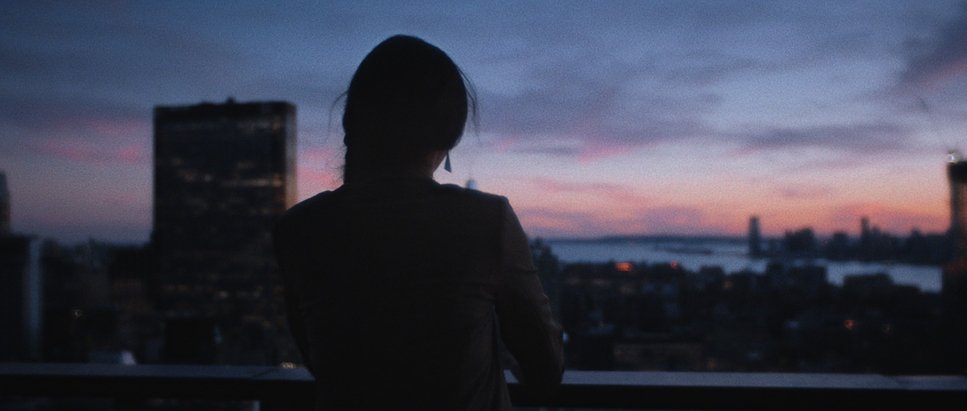
PEANUT BUTTER IS GREEN
A short documentary about seeing the world through colourblind eyes.
Colour-blindness: also known as Colour Vision Deficiency (CVD).
Colourblindness is an often overlooked condition.
I want to change that.
Colourblindness affects approximately 1 in 12 men and 1 in 200 women. In the UK today, there are approximately three million colourblind people. That’s about 4.5% of the entire population of the UK.
You’ve probably heard statistics like these before. Despite them being interesting stats, they do nothing to help communicate the experience of living with colour blindness. Too often, people talk about the science, the how and why, of colour blindness, whilst ignoring the actual lived experience of people with the condition.

Colour blindness can be a relatively insignificant fact for some people, and a major impairment for others. I can’t see whether a banana is ripe, and other people live in an entirely monochromatic world. There are seven different official diagnoses of colour blindness, and each will come with its own set of challenges.
It’s rare that I meet another colourblind person. But when I do, I find we have a lot of experiences in common, and it’s always interesting to hear about someone else’s visual experience of the world.
Like every colourblind person, I’m often bombarded with questions when someone finds out this fact about me, and so I’ve explained colour blindness a thousand times before. This film will exist not only as a way to explain what the condition is, but also what it’s actually like to see the world through colourblind eyes.

A common surprise for colour-blind people is the discovery that peanut butter is in fact not green.
While colour blindness is often discussed only by medical professionals, educators, and misinformed internet personalities, this film will take a different approach. Our focus will be the lived experience of colour blindness—showing what it's like to navigate daily life with this visual impairment.
Through filming conversations with a diverse group of colourblind people, we'll explore the experiences of individuals with different types and severities of colour blindness, varied careers, hobbies, and backgrounds. Their individual stories will highlight uniquely interesting and challenging perspectives, providing a more holistic and inclusive view of the colourblind experience.
We’ll follow our contributors through ‘vignettes’ - their own short stories/journeys - each roughly lasting a minute or two. These vignettes will tell elements of their stories, and/or follow them through everyday experiences that will allow us to highlight colour-related issues they face. For example: How does a GP receive support for diagnostic work? How does a geography teacher navigate lessons when unable to see red? How does a football colourblind coach adapt training to include colourblind children in sports? Or, what happens when a colourblind football commentator can't tell the teams apart during a match? When individuals are given equal opportunities to share their stories without discrimination, it creates opportunities for building empathy.

As with all good films, our aim is for it to foster empathy and entertain.
We also hope to illuminate the kinds of inclusivity that could help create a more colourblind-friendly world.
Why Me? Why am I making this film?
The idea for this film has been simmering in my mind for years. Perhaps as a result of having to explain my visual experience of the world so many times. I've always found it surprising that education about colour blindness is so lacking, given that it's not hugely uncommon, and it's incredibly interesting. I enjoy explaining colour blindness to others. People are genuinely fascinated by the idea that someone might perceive an entirely differently-coloured world than they do. And of course, colour blindness is much more complex than most people realise. This film presents a golden opportunity to share knowledge about this topic with a much wider audience.
As a colourblind filmmaker, I run into colour-related quirks and obstacles often. Most of these quirks are, at least in my own life, quite funny. For example: Why is my dog bright green when he sits on red carpet? It's an experience that is, as far as I can tell, unique to me, and one that has a genuinely fascinating scientific explanation. But some other stories are much less funny. Because people generally understand so little about the condition, discrimination and bullying are more common than you may think.
“The f*** do you know? You’re f***ing colourblind!”
A few recent incidents have nudged me to finally make this film. One in particular was an incident at work, in which a superior mocked my disability in front of my co-workers and used it to discredit my opinion. This is not the only incident like this that I've encountered, and far from the only one I've heard of. Why does it seem socially acceptable to openly mock my disability? I've seen too often how this little-understood condition can be disregarded as something insignificant. Well, sometimes it isn't insignificant. And if I can help educate people on this condition, I will. I believe film is the most powerful tool I have at my disposal to do so.
“Peanut butter is brown” - I choose to reject this notion. Throughout this film, I aim to build the case that peanut butter is indeed green, and demonstrate that colour is truly in the eye of the beholder.
PEANUT BUTTER IS GREEN
PEANUT BUTTER IS GREEN
What’s the current status of the film?
The film is currently in pre-production.
We’re writing, we’re networking, we’re plotting and planning.
More specifically, we’re casting.
You can be a part of this story.
At this time, we’re in need of all kinds of support - there are many ways in which you can help us bring this film to life.
In particular, we’re on the lookout for colourblind people with interesting stories to tell. If you feel you’ve got anything to share with us, please reach out below.
Get in touch with us
peanutbutterisgreenfilm@gmail.com
© BUT WHY LTD. All rights reserved.





